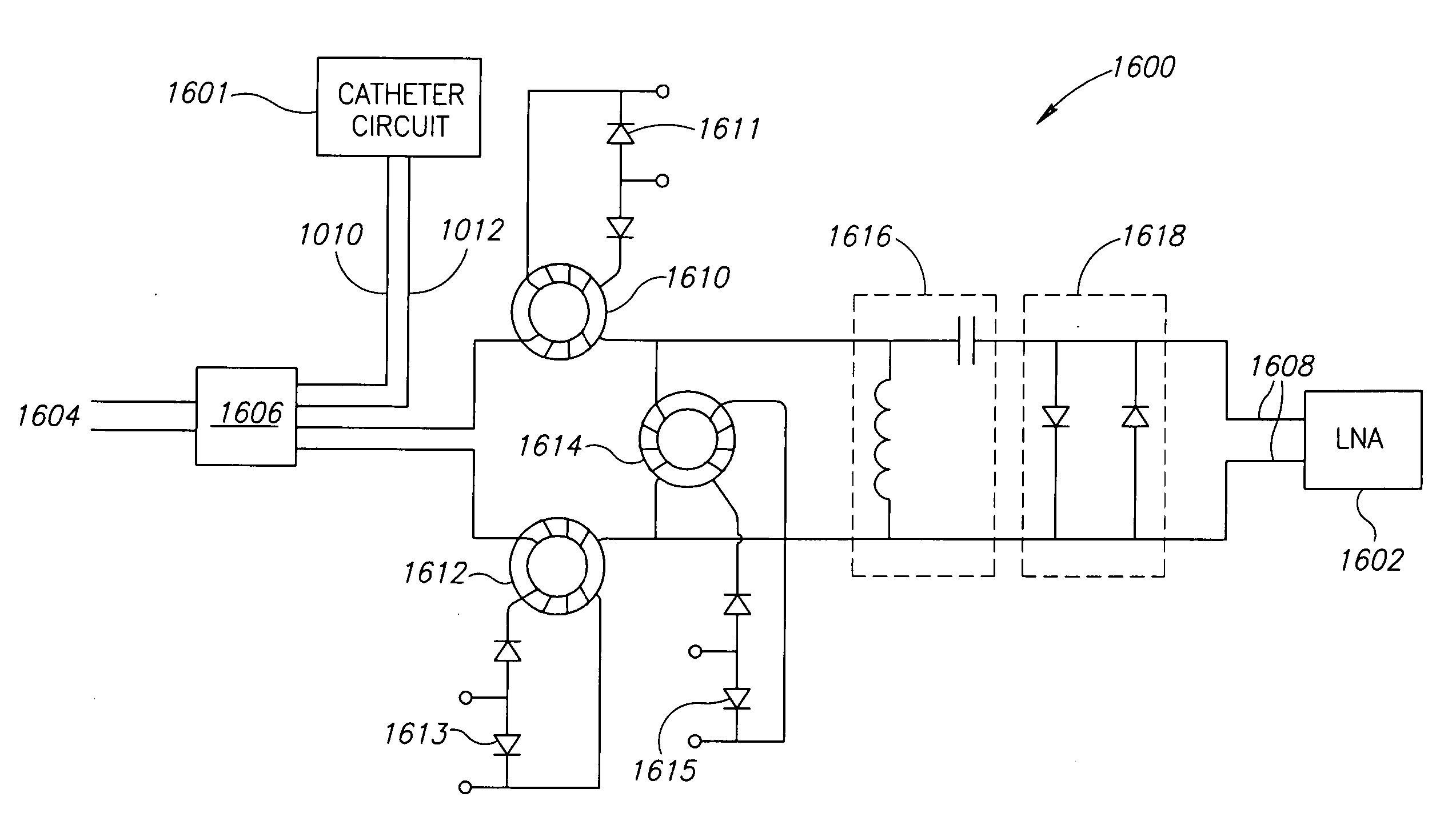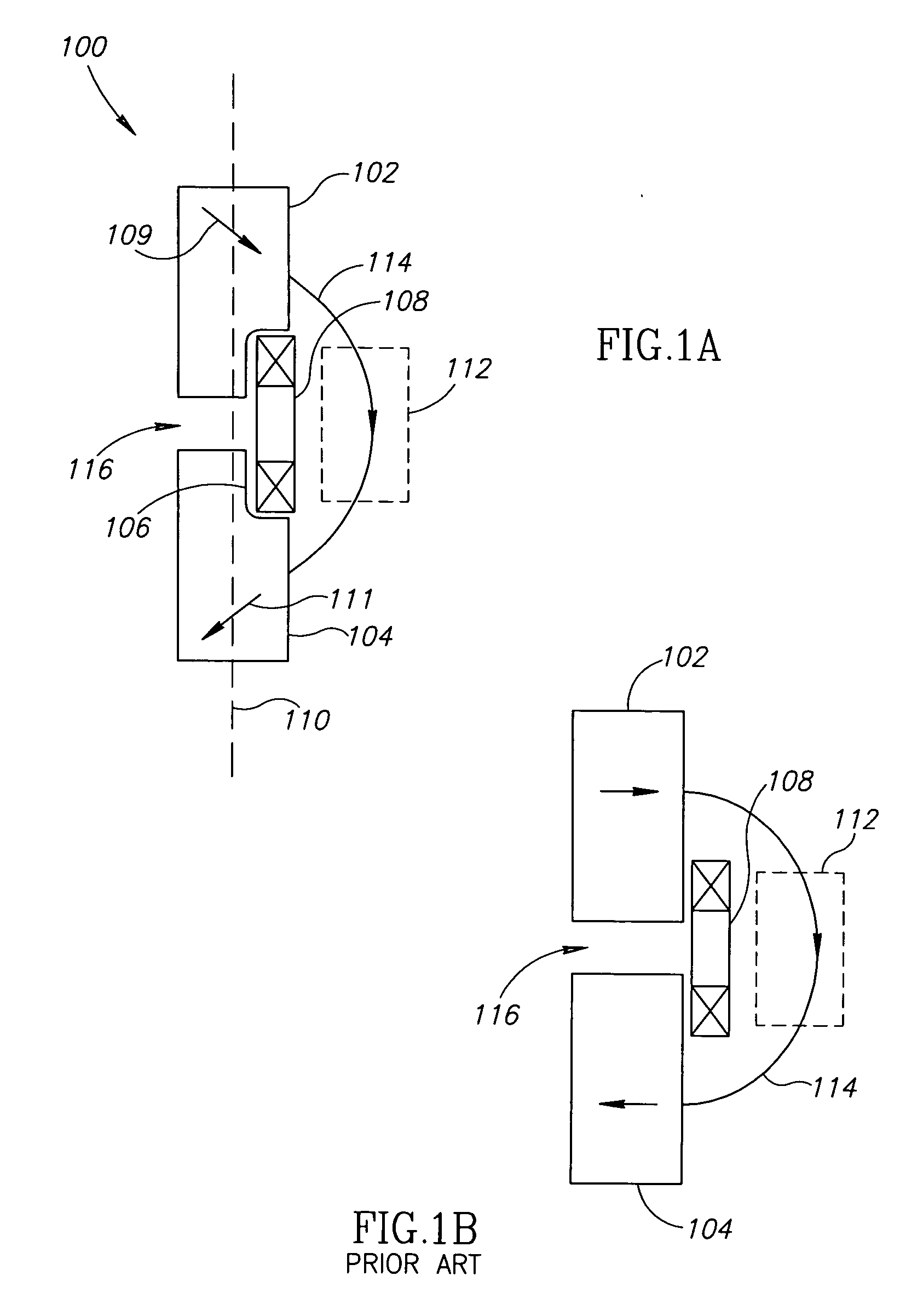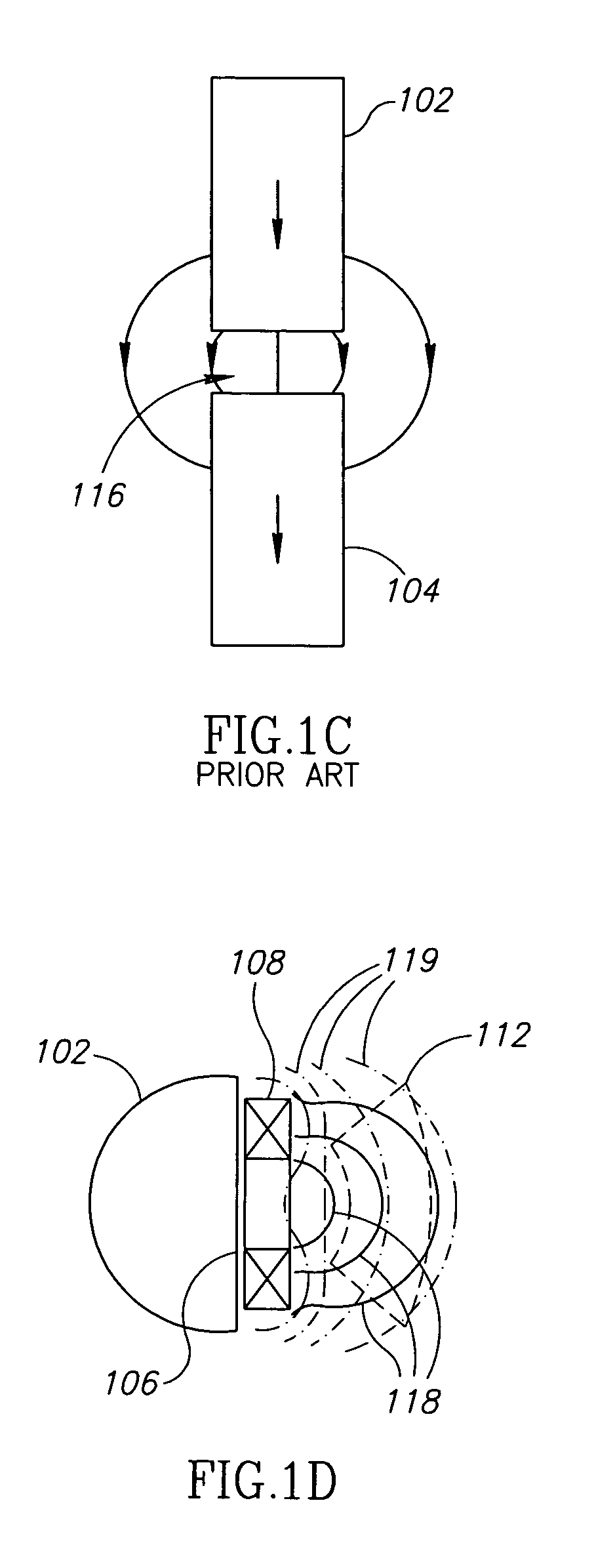Magnet and coil configurations for MRI probes
a magnetic resonance imaging and coil configuration technology, applied in the field of nuclear magnetic resonance probes, can solve the problems of large and expensive equipment that is not very mobile, the conventional mri (magnetic resonance imaging) system suffers from a number of limitations, and the acquisition time is rather long, so as to achieve high saturation flux density, high permeability material, and magnetic field
- Summary
- Abstract
- Description
- Claims
- Application Information
AI Technical Summary
Benefits of technology
Problems solved by technology
Method used
Image
Examples
Embodiment Construction
MRI Probe with Obliquely Magnetized Magnets
[0183]FIG. 1A shows a side-view (x-z plane) cross-section of an MRI probe 100, with magnets 102 and 104. Except for a slot 106, where an RF coil 108 is optionally located, the magnets are circular cylinders, with longitudinal axis (z-axis) 110. RF coil 108, or any of the RF coils shown in the other drawings, is optionally both a transmitting and receiving coil. Alternatively, there are separate transmitting and receiving coils, one or both of them optionally located in slot 106 in the case of probe 100. Optionally, RF coil 108, or an RF coil in any of the other drawings, or one or both of the separate transmitting and receiving coils, is replaced by a different kind of RF antenna. Perspective views of probe 100 are shown in FIGS. 13A and 13B.
[0184] This probe is similar to that described by Blank et al, in U.S. Pat. No. 6,704,594, except for the direction of magnetization of the magnets, indicated in FIG. 1A by arrows 109 and 111 on the ma...
PUM
 Login to View More
Login to View More Abstract
Description
Claims
Application Information
 Login to View More
Login to View More - R&D
- Intellectual Property
- Life Sciences
- Materials
- Tech Scout
- Unparalleled Data Quality
- Higher Quality Content
- 60% Fewer Hallucinations
Browse by: Latest US Patents, China's latest patents, Technical Efficacy Thesaurus, Application Domain, Technology Topic, Popular Technical Reports.
© 2025 PatSnap. All rights reserved.Legal|Privacy policy|Modern Slavery Act Transparency Statement|Sitemap|About US| Contact US: help@patsnap.com



